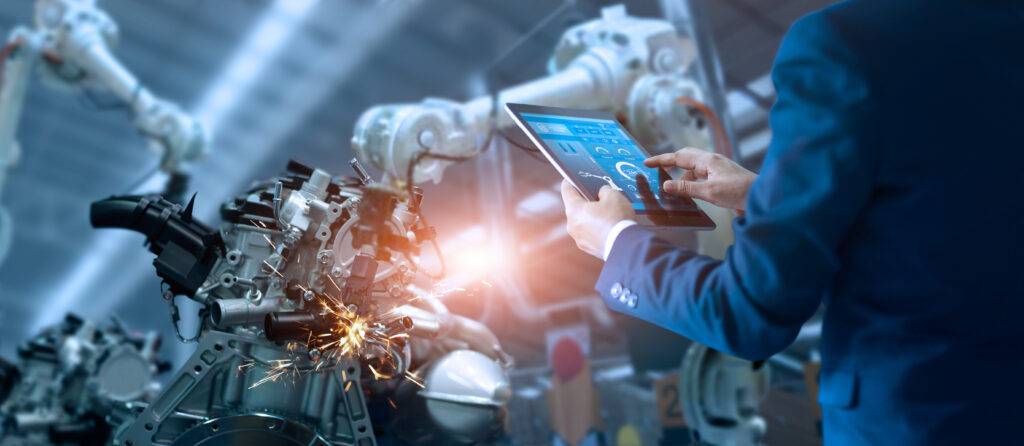The industrial world creates a dangerous workplace. From the highly automated factory floor to heavy industries such as mining, it is vital that we apply standards that ensure workers and equipment are kept safe from harmful conditions, and that our systems deliver reliable service.

In some applications, it is possible for engineers to use products that are tested to recognized international standards. When protecting equipment from tough environments, manufacturers have adopted the notation system known as IP ratings. IP stands for Ingress Protection, and the system provides a shorthand that helps engineers understand the right component choice for their design.
However, component-based certification is only useful for very specific situations. Users have become aware over the last few years of the need for a more holistic approach to safety, often known as functional safety. This is defined by IEC standard 61508 as the safety provided by control systems to an overall process or plant, not by the individual components. It therefore does not focus on specific elements of safety design, such as protection against high-voltage or harsh conditions.
Instead, designers use a SIL (Safety Integrity Level). A SIL is a measure of performance and classifies a system by the probability of failure on demand (PFD). This is the measure of how likely the existing safety features are to fail should an unsafe condition arise. SILs are broken into 4 levels, with level 4 being the highest possible safety performance.
The critical thing to remember is that it is the entire safety system that is being considered. This evaluation is based on the use-case and specific environment, and it is the responsibility of the end user to ensure that an effective safety system is implemented correctly. While designers can select components that deliver safe operation, it is not possible to ensure a Level 3 SIL simply by choosing SIL-rated components.
All-Up Testing
This is not a new problem – it has long been realized that it is impossible to design a safe or reliable device simply by choosing a range of reliable products. NASA came up against this problem during the Apollo program in the 1960s. The Apollo program is quite possibly one of the most remarkable engineering achievements of modern times producing one of the most complicated devices ever made. The Apollo rocket was over 300 feet tall, weighed 6 million pounds, and comprised hundreds of thousands of individual components.

NASA was faced with the unenviable task of assigning a number to the predicted reliability of the rocket. There were two approaches to this number. The first was to identify the reliability of each component within the rocket and multiply each to decide upon the overall reliability of the system. An individual component with a reliability of 99.9% would appear to deliver a high confidence of success.
However, if we consider the hundreds of thousands of components that were involved in the Apollo program, this method quickly renders an unacceptable answer. A thousand components, each with a reliability of 99.9% results in an overall reliability of just 36%.
The engineers at NASA decided to adopt a process called all-up testing. This concept said that it was pointless to try and design a rocket based upon the reliability of individual components, and instead design the quality into the whole system. If we take this analogy into the electronics industry, we need to look past the individual reliability of individual components and instead consider the reliability of the completed device.
Reliable Components for Robust Designs
Despite this, Samtec recognizes that customers need to understand the performance of connectors destined for use in these tough environments. To provide this assurance, Samtec has introduced the Severe Environment Testing (SET) Program. The goal of the program is to take standard commercial connectors and subject them to a testing schedule that rivals or even exceeds that of military products. From shock and vibration to extreme temperatures and electrostatic discharge, the SET program allows customers to choose connectors based on their performance, secure in the knowledge that they will be up to the task.
Even when equipment is not subjected to tough conditions of vibration, temperatures or moisture, it is important to understand the effects that time will have on performance. Sometimes equipment is designed to work for many years with minimal maintenance. In other circumstances, it might be necessary to store components, ready to be used as replacements are needed.
In both cases, users need to have confidence that the connector will continue to perform well, even after the passage of time. To provide this confidence, connectors can be subject to a number of tests that tests a lifetime of use. These tests include high numbers of mating cycles, far beyond the normal specification for equivalent commercial connectors. In addition, a Mixed Flowing Gas (MFG) test uses carefully controlled temperature and humidity, along with high concentrations of gases including chlorine, hydrogen sulfide and nitrogen dioxide. The resultant atmosphere provides a simulation of up to 10 years of exposure to the atmosphere.
Alongside the SET program, Samtec has introduced its own Extended Life Products (E.L.P.™) certification. A product that received the ELP label has been tested to rigorous standards which evaluate contact performance in simulated storage and field conditions. Customers choosing these products can be confident that the connectors will still perform after many years of service.



Leave a Reply